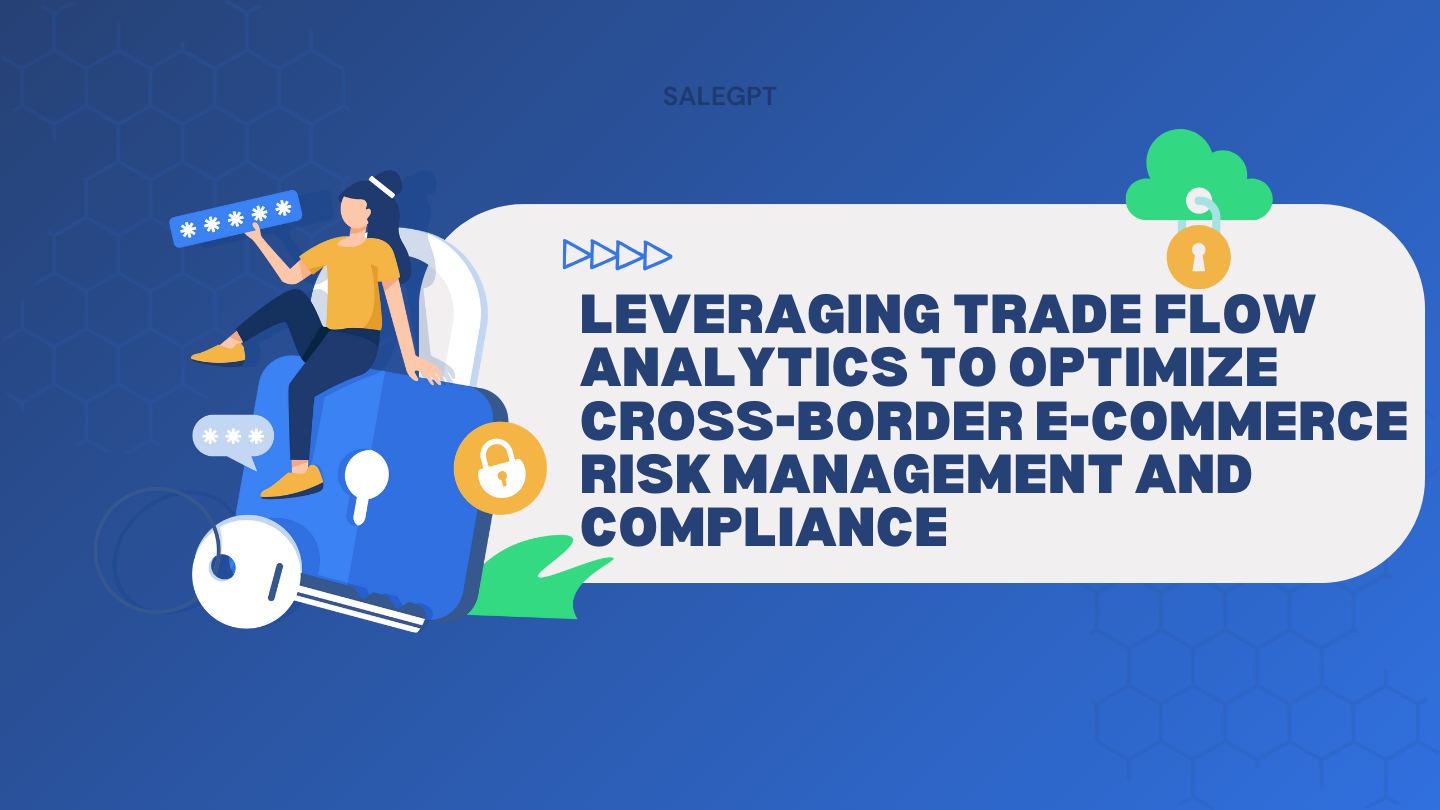
Leveraging Trade Flow Analytics to Optimize Cross-Border E-Commerce Risk Management and Compliance
The Growing Need for Risk Management in Cross-Border E-Commerce
The complexities of international trade expose cross-border e-commerce businesses to a range of risks, from supply chain disruptions to regulatory non-compliance and geopolitical instability. With growing trade volumes and evolving global trade regulations, businesses need sophisticated tools to monitor and mitigate these risks.Trade flow analyticsprovides a critical resource for businesses to anticipate risks, streamline compliance, and improve the overall security of their operations.
How Trade Flow Analytics Enhances Risk Management and Compliance
1. Monitoring Trade Flow for Supply Chain Disruptions
Trade flow analyticsallows businesses to track the movement of goods across borders in real time, helping them identify potential disruptions in the supply chain. By analyzing trade flow data, businesses can detect bottlenecks, port congestion, and shipping delays early, enabling them to take proactive measures such as rerouting shipments or adjusting inventory levels. This helps minimize supply chain risks and ensures that businesses can meet customer expectations despite unforeseen disruptions.
2. Ensuring Compliance with Global Regulations
Global trade is governed by an increasingly complex set of regulations, including customs duties, tariffs, export controls, and compliance with local laws.Trade flow analyticshelps businesses stay on top of these regulations by providing up-to-date insights into tariff rates, compliance requirements, and trade restrictions across different regions. By leveraging these insights, businesses can ensure they are meeting the legal requirements of each market, reducing the risk of non-compliance penalties.
3. Assessing Compliance Risk Across Markets
Businesses involved in cross-border e-commerce must navigate various regulatory environments, each with its own rules and risks.Compliance risk assessmentthrough trade flow data provides a comprehensive view of potential risks in different markets. For example, businesses can use data to identify countries with unstable regulatory environments or high-risk compliance factors, allowing them to adjust their operational strategies accordingly. This ensures businesses remain compliant and reduces the likelihood of facing costly fines or legal issues.
4. Improving Transparency and Security
Withtrade flow analytics, businesses can gain greater transparency into their international transactions and supplier networks. By closely monitoring trade flows, businesses can spot unusual patterns or discrepancies that might indicate fraudulent activity, counterfeiting, or other security risks. This increased visibility helps businesses safeguard their operations and protect their brand reputation.
Steps to Leverage Trade Flow Analytics for Risk Management and Compliance
1. Monitor Global Trade Flows in Real-Time
UseTradeLink AI Insightsto track global trade data and monitor potential supply chain disruptions. By identifying early warning signs such as shipping delays or congestion, businesses can adjust their logistics strategies in real time.
2. Evaluate Tariffs and Regulatory Compliance
Leverage trade flow data to assess tariff rates, customs duties, and trade restrictions for each target market. By staying updated on regulatory changes, businesses can adjust pricing and product offerings to stay compliant and avoid penalties.
3. Assess Regional Compliance Risks
Usecompliance risk assessmenttools to identify regions with high regulatory risks or instability. With this data, businesses can adjust their supply chain strategies, choose more reliable suppliers, or even explore alternative markets with lower compliance risks.
4. Enhance Security Through Transparency
Improve the security of cross-border transactions by closely monitoring trade flows for irregularities. By identifying unusual patterns, businesses can take action to protect their operations from fraud or security breaches.
Data-Driven Risk Management for Cross-Border E-Commerce Success
Trade flow analytics and compliance risk assessment provide critical insights that help e-commerce businesses navigate the complexities of international trade. By leveraging real-time trade data, businesses can optimize their risk management strategies, ensure compliance with global regulations, and enhance operational security, ultimately driving success in cross-border markets.
Strengthen your cross-border risk management and compliance strategy today withSaleAI. UseTradeLink AI Insightsto gain real-time trade flow data and improve your operational resilience in global markets.


